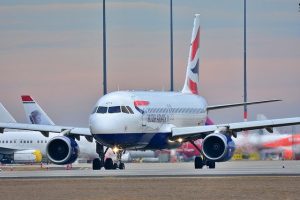 While flying is undoubtedly safer than driving, neither it nor any other method of transportation is free of accidents. Statistics show, in fact, that approximately 13,000 airplanes in the United States are struck by birds each year. The good news is that most instances of bird strikes are minor, meaning they don’t pose a risk to crew members or passengers. Nonetheless, airports throughout the country and abroad deploy measures to keep birds off the tarmac so that airplanes can take off and land safely.
While flying is undoubtedly safer than driving, neither it nor any other method of transportation is free of accidents. Statistics show, in fact, that approximately 13,000 airplanes in the United States are struck by birds each year. The good news is that most instances of bird strikes are minor, meaning they don’t pose a risk to crew members or passengers. Nonetheless, airports throughout the country and abroad deploy measures to keep birds off the tarmac so that airplanes can take off and land safely.
Alter Flight Schedules
According to the U.S. Federal Aviation Administration (FAA), many airports adjust their flight schedules to minimize the number of takeoffs and landings during times of the day when native birds are most active. If a particular species frequently travels through the airport’s airspace during the hours of 6:00 a.m. to 9:00 a.m., for instance, airport officials may avoid scheduling flights during the hours.
Remove Food Sources
In addition to alternating flight schedules, airports may attempt to remove the problematic birds’ food sources from the local environment. Birds, like most animals, travel to find food. If there’s no food available in an area, they probably won’t stay long. As a result, some airports strive to remove birds’ food sources to deter them from their airspace.
Clearing Brush
Birds typically seek dense brush and other forms of thick foliage for protection. If there’s dense brush present, birds may land in it. To keep birds away, many airports clear brush and other forms of thick foliage. This alone typically won’t prevent birds from entering the airport’s airspace. When used in conjunction with other preventative measures, though, it can certainly help to lower the risk of bird strikes.
Alarms or Sirens
Of course, alarms and sirens are often deployed to deter birds from airports. When a flock of birds is making its way towards an airport, officials may activate the alarm or siren. Once activated, it will create a loud audible noise that deters birds away from the airport.
Covering Water With Nets
Even if there’s little or no thick brush present, birds may still pose a risk to an airport and its airplanes. Some birds, for example, will land on bodies of water, including lakes and ponds. For bodies of water such as these, airports may cover them with a net to discourage birds from landing. These are just a few ways that airports keep birds away to promote a safer flight experience for crew members and passengers alike.



